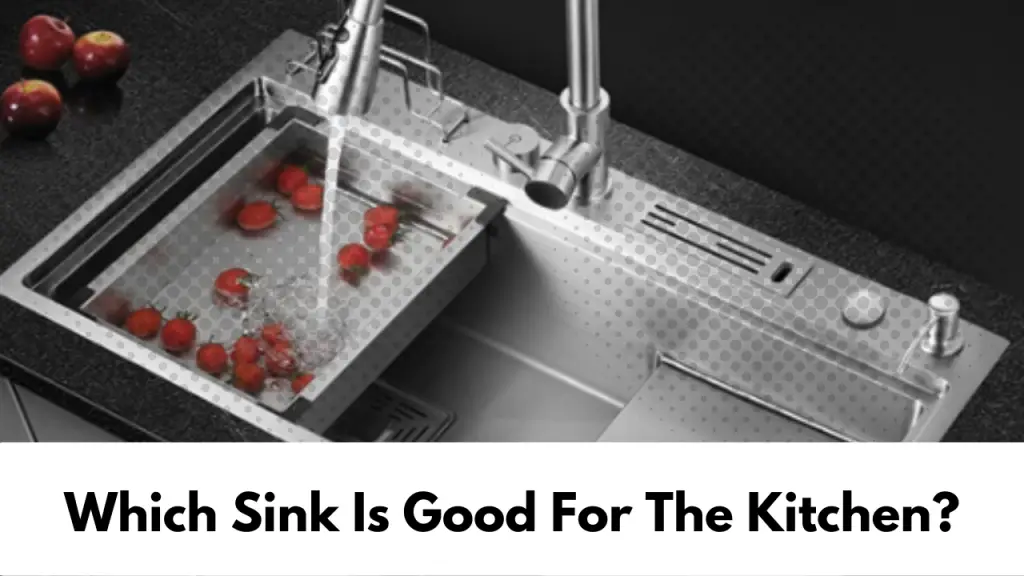
There are several alternatives to consider when selecting a kitchen sink, from its kind to size, appearance, and materials—finding the ideal sink for your requirements and the entire kitchen design. To assist you in making an informed choice, we’ll examine the most popular sink types accessible in this article, along with their benefits and drawbacks. But first, which sink is good for the kitchen?
You can’t go wrong with stainless steel for your kitchen sink. In addition to withstanding large spills from pots and pans, this top kitchen sink material is also resistant to scratches from utensils and sharp blades.
Types of Sinks
There are several types of sinks to choose from, including:
Drop-in
Drop-in sinks, often called self-rimming sinks, are placed on top of the countertop and lowered into a hole drilled into the surface. They are available in several materials, including stainless steel, porcelain, acrylic, and solid surface, and are simple to install.
Undermount
Sinks with an undermount installation don’t have a lip that protrudes over the countertop. They produce a smooth, streamlined appearance but are more challenging to install than drop-in sinks. Additionally, they are made of various materials, including solid surfaces, porcelain, and stainless steel.
Farmhouse
Apron-front sinks, commonly called farmhouse sinks, features a wide front that overhangs the counter and a deep basin. They are frequently fashioned of materials like fireclay, cast iron, or stainless steel and are well-liked for their timeless, vintage appearance.
Corner
Kitchen corners may accommodate corner sinks, which saves room. Although they come in various materials, they are frequently smaller than other sinks.
Bar/Prep
These sinks are smaller and were created specifically for kitchen prep areas or wet bars, which are smaller spaces.
Pros and Cons
- Drop-in sinks can be less costly than other sinks and are simple to install. However, because the rim is above the surface, they might be more difficult to clean.
- Undermount sinks offer a clean, smooth appearance, but they can be trickier to install and could need a professional. Additionally, they are often more costly than drop-in sinks.
- Larger pots and pans may fit in the deeper basin of farmhouse sinks, renowned for their traditional and antique appearance. But because they may be so hefty, extra support is needed.
- Corner sinks are a fantastic alternative for compact kitchens, but their size and design options may need to be more constrained.
- Although they are less adaptable than other basins, bar/prep sinks are ideal for smaller spaces like a wet bar or a prep area in the kitchen.
Factors to Consider
It’s crucial to consider your own wants and tastes when selecting a sink for your kitchen, as well as the overall style of your kitchen.
- The sink’s size, design, and material should all be considered. Solid surfaces, stainless steel, and porcelain are among the most common materials.
- The sink size should be proportionate to the size of your kitchen and the amount of use it will receive, which is another vital aspect to consider.
- Additionally, it’s essential to consider the sink’s practicality, particularly if you enjoy cooking and hosting guests.
- Consider how many people you regularly feed when deciding if you need a bigger sink to wash bigger pots and pans.
The ideal sink for your kitchen will ultimately rely on your requirements, the layout of your kitchen, and your financial constraints. It’s a good idea to learn about the many sink options, assess the benefits and drawbacks, and carefully examine the elements that are most significant to you. You may also visit a home improvement store or showroom to examine the many sink alternatives in person and better understand your options.
Conclusion
Once you’ve decided on the sort of sink you want and have reduced your alternatives, it’s crucial to have a professional install it if necessary. Doing so may guarantee that the sink is fitted and sealed and that the essential piping is linked properly.
Different sink materials will have various care guidelines when it comes to upkeep. Stainless steel sinks require little upkeep and are simple to clean with soap and water. Sinks made of porcelain could be more prone to chips and scratches and might require cleaning with a soft cloth and a light detergent. Solid surface sinks are renowned for their toughness, heat, and stain resistance; however, they could need specific cleaning supplies.
In the end, you’ll be well on your way to picking the ideal sink for your kitchen by considering the many types of sinks available, their benefits and drawbacks, and how they fit your needs and tastes. You’ll be able to enjoy a practical and fashionable kitchen that fulfills all of your needs with the correct sink.
